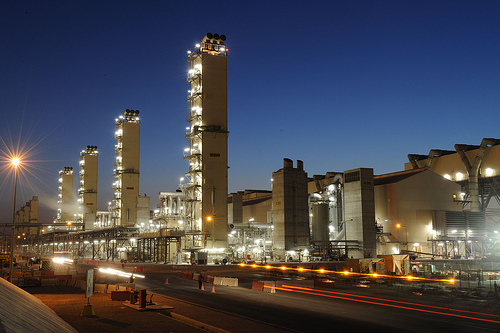There is an interesting question regarding the contribution that so-called "synthetic fuels" (i.e., those made from raw materials other than crude oil) could make to our motor fuels supply. Technology for several of these fuels has been commercialized, with substantial contributions from chemical engineers. However, the cost of making these and the capital cost for their production facilities is relatively high. So, they only make sense if the price of crude oil price projected to stay high, or if governments are willing to subsidize their production in the national interest.

Almost all automobiles, trucks, ships and some railroads run on liquid fuels derived from crude oil. There has long been a concern that, at some point, global crude oil supply and production will not meet demand, as "peak" oil production is reached. Meanwhile, prices have been on a steady rising trend, reflecting rapidly growing demand for motor fuels in China, India, and elsewhere. When demand exceeds supply on a long-term basis, crude prices will rise rapidly. So, can we produce these fuels economically from other sources that are relatively much cheaper and broadly available in many parts of the world, specifically, coal or natural gas? This is an area of considerable interest, but also one with big questions, including believable supply-demand projections, price forecasts, technology, and the willingness to invest very large amounts of capital, as required for plants making these synthetic fuels. In September of this year SASOL, a South African company, announced its intention to build a 96,000-barrel-per-day gas-to-liquids plant in Lake Charles, LA, based on its Fischer Tropsch process. This technology, first developed in Germany during World War II to make gasoline from coal via production of synthesis gas (CO and hydrogen), can also be used to convert natural gas into gasoline and diesel fuel. The SASOL plant is estimated to cost $ 10 billion(!). The decision to build this plant was evidently based on the large and growing quantities of inexpensive natural gas now being produced from U.S. shale deposits. A plant of this kind, partly based on SASOL technology, was built by Shell in Qatar and is in successful operation. See photos.You can learn more about SASOL's gas-to-liquid technology at SasolGTL.com and see photos of the announcement of their Louisiana project, which is projected to create 850 new jobs.
What are your thoughts on GTL technology?
Peter Spitz is a new contributor to ChEnected. He has spent his entire career in the chemical and energy industries, working for a large oil company, for a research and engineering company in petrochemicals, and as a consultant to the global chemical industry. He was also the founder and president of a respected international consulting firm, Chem Systems Inc., which was acquired by IBM in 1998.To learn more about him, read his complete bio. Also visit his personal blog at chemengineeringposts.com


Comments
Good to get your comment. I have not yet seen the article, but believe that plant-based biofuels should be competitive at much lower prices. I'll look into this. Perhaps it depends on the plant. Corn is a plant but maybe they are talking about switchgrass- even so I am surprised!
If this plant costs $10 billion, what would be the capital cost of a refinery in the US producting 96,000 bbl/d of gasoline & diesel? It'll be significantly less, so the natural gas feed better be a lot cheaper than projected crude oil cost.